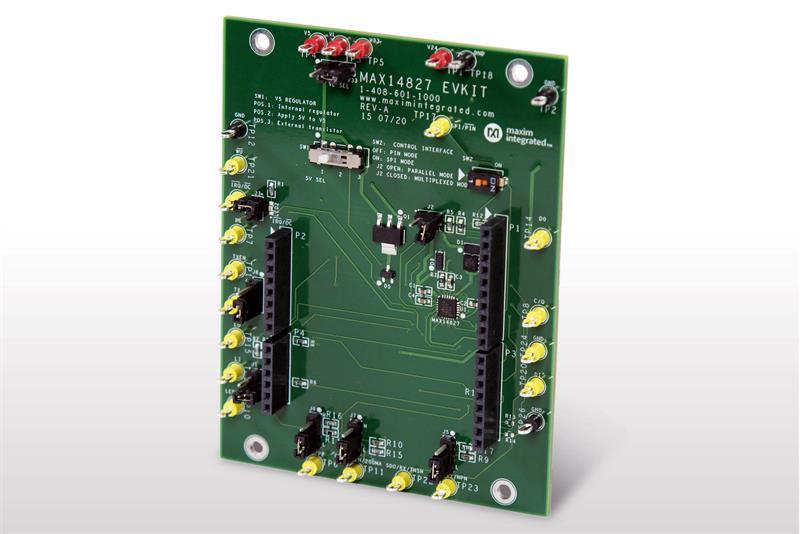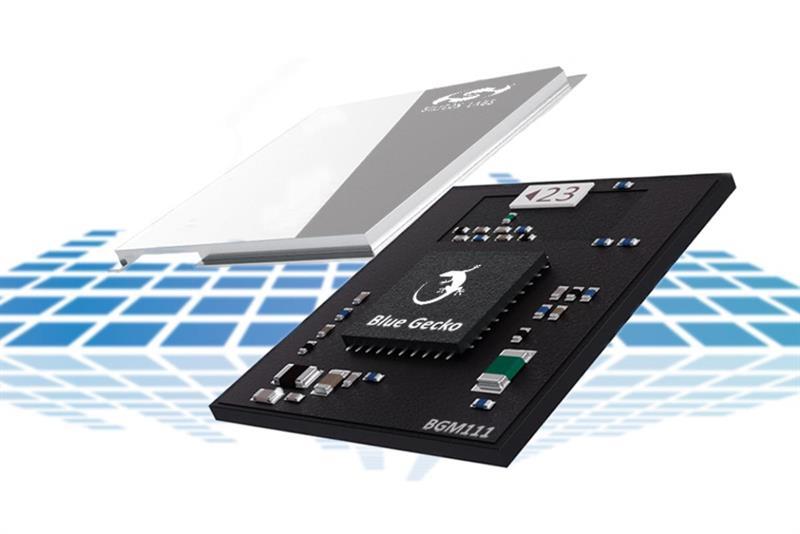Among the announcements at Embedded World was the launch of the Visible Things platform for the development of IoT systems and applications. Unveiled by Avnet Memec-Silica, the platform is intended for a range of industrial markets.
 Maxim Integrated introduced the MAX14827, a dual-channel 250mA IO-Link transceiver which integrates the high voltage functions commonly found in industrial sensors, including two low power drivers with active reverse polarity protection.
Maxim Integrated introduced the MAX14827, a dual-channel 250mA IO-Link transceiver which integrates the high voltage functions commonly found in industrial sensors, including two low power drivers with active reverse polarity protection.
Altium showed a pre-release BETA version of its power distribution network (PDN) analysis solution for Altium Designer, its flagship PCB design platform. The PDN Analyzer extension is intended to allow engineers to resolve PDN issues more easily as they arise in the board layout process, without having to rely on physical prototypes to identify voltage and current issues.
Cypress added the S Series to its PSoC 4 family. With an ARM Cortex-M0+ processor, 16 to 64kbyte of flash and up to 36 general purpose I/O, the part integrates CapSense capacitive sensing technology. PSoC 4 devices are targeted at industrial systems, wearable electronics and home appliances.
 Silicon Labs announced the Wireless Gecko range of wireless SoCs. The three families include: Blue Gecko, offering Bluetooth Smart connectivity; Mighty Gecko, featuring ZigBee and Thread connectivity; and Flex Gecko, that supports proprietary wireless protocol options.
Silicon Labs announced the Wireless Gecko range of wireless SoCs. The three families include: Blue Gecko, offering Bluetooth Smart connectivity; Mighty Gecko, featuring ZigBee and Thread connectivity; and Flex Gecko, that supports proprietary wireless protocol options.
NXP introduced the QorlQ LS1012A processor. Alongside a 2Gbit/s packet cryptoaccelerator and an ARM Cortex-A53 core, the device offers dual 2.5Gbit Ethernet, PCIe, SATA3 and USB 3.0 with integrated PHY. It also unveiled the AXP family of logic translators, said to be the lowest power and voltage translator solutions on the market, while offering voltage translation in a range from 0.7 to 5.5V.
Pericom Semiconductor launched a number of products, the most eye-catching being the PCIe 2.0 packet switch which, according to the company, is the industry’s only such device that supports x4 upstream to 2 x2 ports downstream, and the AECQ three Port/four Lane packet switch for infotainment applications.
 Finally, Infineonsays its XMC1400 MCU range will enable new applications in industrial automation, digital power conversion and electronic control. Devices in the Cortex-M0 based range run at up to 48MHz, while elements such as the PWM timers and A/D converters can operate at 96MHz. There are four CCU timer modules, two interfaces for Hall sensors or optical encoders and up to four comparators for the regulation of switching power supplies.
Finally, Infineonsays its XMC1400 MCU range will enable new applications in industrial automation, digital power conversion and electronic control. Devices in the Cortex-M0 based range run at up to 48MHz, while elements such as the PWM timers and A/D converters can operate at 96MHz. There are four CCU timer modules, two interfaces for Hall sensors or optical encoders and up to four comparators for the regulation of switching power supplies.













